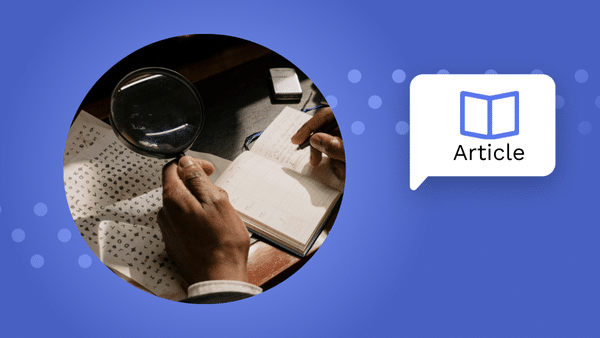In most of the world, personal checks are uncommon, but in the US both consumers and businesses still use them as a convenient way to transfer funds. Unfortunately, criminals also find them convenient, pushing up check fraud in the US.
Fraudsters and thieves take advantage of practices like putting a check in the mail and holding a check to use later. In this article, we’ll discuss check fraud methods and consequences, and explore ways to address it effectively.
A short definition of check fraud
Check fraud is a financial crime that uses paper bank instruments, called checks, to steal funds. It involves a number of different schemes and methods, including forging stolen checks, altering genuine checks, counterfeiting checks, and taking over accounts to write checks without the owner’s knowledge. Criminals use check fraud to cause billions of dollars of losses every year.
The common types of check fraud schemes
There are four common check fraud methods:
- Forged checks are when a criminal steals blank checks and writes their own information on it, including a fraudulent signature.
- Counterfeit checks are checks that have been completely fabricated using advanced imaging and/or printing technology. It can be extremely difficult to distinguish between a real check and a counterfeit one.
- Altered checks are when criminals steal a real check from outgoing mailboxes or as part of a wider theft ring, and change the information on it for their own ends. This can be done by simply crossing out and changing information, but a process called Check Washing is more effective. Fraudsters use chemicals to remove the details on the check and replace them with a new amount, beneficiary, or both.
- Account takeovers. This is when criminals use phishing, malware, or stolen credentials to gain illegal access to someone’s account, and then use their assets for their own purposes. Accounts and credentials are also available for purchase on the dark web.
The signs of potential check fraud
It’s not easy to spot fraudulent checks, but there are a few signs of fake checks to look out for. These include different ink colors or handwriting styles on the same check, unusual markings, and number amounts that don’t match the written amounts. Checks which look like they’ve been erased and rewritten are suspicious because these are signs of check washing.
You should also keep an eye out for checks that have duplicate serial numbers, have been reported as stolen, and/or have incorrect or missing information like the wrong bank names or routing numbers. Banks should be on the lookout for accounts receiving checks from unknown sources or for higher amounts than you’d normally expect, or accounts that often see bounced checks or insufficient funds notices.
The methods for detection of check fraud
Identifying fraudulent checks requires a combination of human attention and technological tools. Individuals and businesses should regularly monitor their bank statements for unauthorized transactions and reconcile accounts promptly.
Banks can use fraud detection systems that analyze checks for alterations in font, ink color, or handwriting, and verify security features like microprinting and watermarks. Check verification processes cross-reference check details with account information. But it’s more important to know your customers’ habits, so you’ll spot discrepancies and deviations from their usual transaction patterns.
The steps for preventing check scams
Preventing forged checks begins with good check security habits. Individuals and businesses should keep checks in a secure location to help avoid check fraud. It’s best to deposit checks using mobile upload if you can’t make it to your bank in person, but important to destroy or secure the physical check after deposit. Never mail checks, it’s the number one way that criminals get hold of them.
Keep a record of all the checks you write, and verify them monthly. Only use checks that have high security features like watermarks, microprinting, and holograms that are difficult to replicate and, when you write a check, fill out every field completely using permanent ink that can’t be easily erased.
Using technology to prevent check scams
As fraudulent checks become more sophisticated and harder to detect, technology is also developing advanced check fraud solutions that help anti-fraud teams. Many banks use check fraud detection tools which analyze each check to look for tiny alterations that indicate fraud, which might not be visible to the human eye.
Positive Pay services – used by businesses – also help prevent check fraud. This is a system that compares checks presented for payment against a list of checks issued by the account holder, so that only authorized checks are processed. Next-generation solutions like Refine’s Intelligent Customer Outreach for Check Fraud bring in a new approach, making it easy to ask customers – both business and consumer – to verify their checks through a fast digital process.
The legal liability for check fraud
Different bodies bear liability for identifying fraudulent checks, depending on types of check fraud schemes.
The maker bank, which is the bank that’s printed on the checks and promises to pay the amount written on them, has liability for detecting and refusing:
- Counterfeit checks
- Forged checks
The bank of first deposit, which is the bank where a check is deposited and which requests the funds from the maker bank, has liability for detecting and refusing Altered checks which have been changed using check washing or another process.
The bank that’s liable for spotting a fraudulent check is the bank that would reimburse the victim if they fail to notice the scam.
The best practices for business check security
Like individuals, businesses should also be careful to ensure secure check handling and make sure there is no unauthorized access. Only use checks with advanced security features and set up a segregation of duties so that no one person has control over the entire process of issuing and reconciling checks.
At the same time, you should regularly reconcile bank statements and monitor your accounts for any unusual transactions, so that you can spot discrepancies that might be a sign of check fraud. Train employees to be aware of the risks of check fraud and in recognizing check scams, and encourage them to promptly report suspicious activities.
Case studies of check fraud incidents
Sadly, there are many check fraud case studies that emphasize the need for advanced check fraud protection techniques. For example, in New York in 2023, a small business reported that 15 checks from clients were stolen from the mail. The checks were “washed” to change the name of the beneficiary, and 10 of them cashed successfully by criminals.
In Florida, a man ran a check fraud ring for almost a year, causing over $400,000 in actual losses, and in California, a check fraud scheme stole $195,345 from 38 victims over the course of two years.
Resources for further information about check fraud
Most banks have some kind of anti-fraud knowledge base for customers, to help prevent check scams. The OCC (Office of Comptroller of the Currency), industry associations, and other agencies also publish guides.
Here are some good places to start for more information about preventing check fraud:
- Case Study: Valley Bank Protects Customers Against Check Fraud with Refine
- eBook: Check Fraud Kill Chain – Moving from Detection to Prevention
- Fraud Prevention: An ABA Frontline Compliance Training Course
- How to Prevent Check Fraud
- Check Fraud: A Guide to Avoiding Losses
- 8 Ways to Help Prevent Check Fraud







